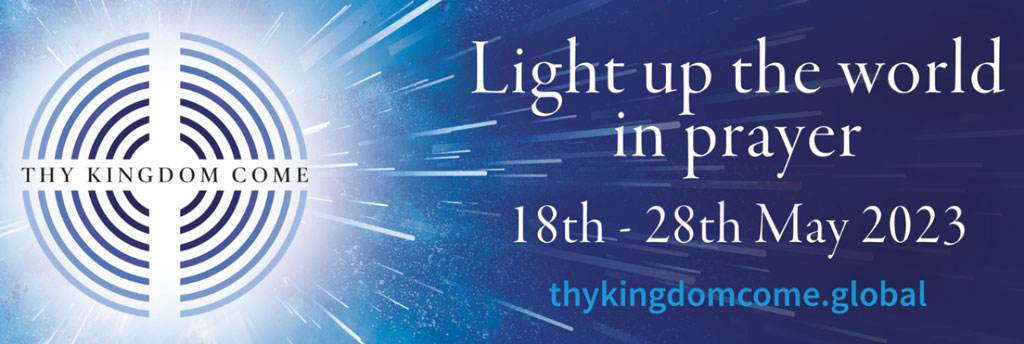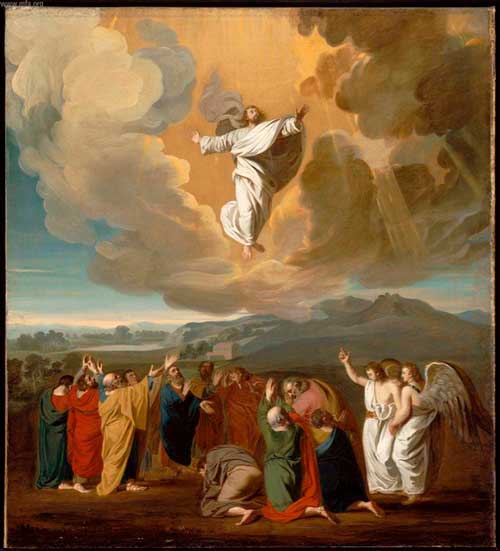I.Theme – The Ascension and its implications for the church

"The Ascension" – Catherine Andrews
The lectionary readings are here or individually:
Old Testament – Acts 1:6-14
Psalm – Psalm 68:1-10, 33-36
Epistle –1 Peter 4:12-14; 5:6-11
Gospel – John 17:1-11
The New Testament treats the Ascension as an integral part of the Easter event. It is the final appearance Jesus’ physical and resurrected presence on earth.
The Ascension is the final component of the paschal mystery, which consists also of Jesus’ Passion, Crucifixion, Death, Burial, Descent Among the Dead, and Resurrection. Along with the resurrection, the ascension functioned as a proof of Jesus’ claim that he was the Messiah. The Ascension is also the event whereby humanity was taken into heaven.
The Ascension is the beginning of the church’s mission more so than Pentecost:
1. It is powered by the Spirit
2. It is a call to be witnesses
3. It is worldwide is scope
The Ascension holds the promise of Christ’s return
The Ascension also effectively connects the story of Jesus with the story of the church .
The early church recognized the significance of the Ascension. It is found in every major creed. For example, the Apostles’ Creed states: “On the third day he rose again; he ascended into heaven, he is seated at the right hand of the Father, and he will come again to judge the living and the dead.”
The risen Jesus now sits in a position of authority ("the Father’s right hand"). With Jesus at the Father’s right hand, we can never think of God in the same way again, that is, apart from Jesus.
Ascension is all about direction.
1. Looking upwards
Where is heaven ? When the early church confessed that Jesus had ascended into heaven, the emphasis was not so much on a place – the emphasis was on God’s immediate presence. The church was confessing that Jesus had entered into the divine glory – that the risen Jesus now dwelt in the immediate presence of God. This may explain the meaning of the phrase, "a cloud took him out of their sight" (Acts 1:9). Oftentimes in scripture, a cloud represents the shekinah glory of God, the sign of God’s presence (cf. Exo. 33:7-11; Mark 9:7).
2. Heading downwards
Apostles are grouped together in Jerusalem awaiting their next step. "Then they returned to Jerusalem from the mount called Olivet, which is near Jerusalem, a sabbath day’s journey away. When they had entered the city, they went to the room upstairs where they were staying…l these were constantly devoting themselves to prayer
3. Setting outwards.
This is an opportunity to reflect on the mission imperative of the church, the dangers of the church looking inward and the strength we gain from a Jesus now in the heavens who equips us for service
Read more






 “Thy Kingdom Come” is celebrating its 7 year anniversary in 2023. Since May 2016, The Archbishop of Canterbury, Justin Welby, and the people of Thy Kingdom Come have been bringing the world together in prayer. St Peter’s has been part of this international prayer initiative for several years. Here is the
“Thy Kingdom Come” is celebrating its 7 year anniversary in 2023. Since May 2016, The Archbishop of Canterbury, Justin Welby, and the people of Thy Kingdom Come have been bringing the world together in prayer. St Peter’s has been part of this international prayer initiative for several years. Here is the 
